According to classical physics, light travels in a straight line until it hits something.
Einstein’s general theory of relativity put forward a different an idea.

A large object such as a galaxy or cluster has enough mass that its gravity causes the fabric of spacetime to warp around it.
To anyone travelling alongside light passing the object, it would appear that the photons were moving in a straight line, but from farther away the light would apparently be bent around the large object, curving with the warp in spacetime.
This bending causes light to act as if it has been passed through a lens and is known as gravitational lensing.
The light from the background source (usually a distant galaxy) is magnified, making the image appear brighter than it would if the lensing mass (also usually a galaxy) hadn’t been there.
The closer the light passes to the lens, the stronger the effect of gravity, the more the light is bent and the greater the magnification is.
The same is true of the lens’s mass; again, the more massive it is, the stronger the effect.

What gravitational lensing looks like
Unlike the glass lens you might find in a telescope, which focuses light to a single point, the images produced by this ‘gravitational lensing’ are far from perfect copies of the original.
What we see from Earth varies. In the case of strong lensing, where the light is bent most, the background galaxy appears as an elongated arcs, and often more than one image of it is present.
When the lensing is only weak, however, the effects are much subtler.
The images are not obviously distorted, and it is only by looking at a wide patch of night sky that the lensing becomes apparent.
In this case the images of the background galaxy appear to line up around the lensing galaxy, pulled into line.
There's even evidence that gravitational lensing could be causing observed repetition of fast radio bursts.
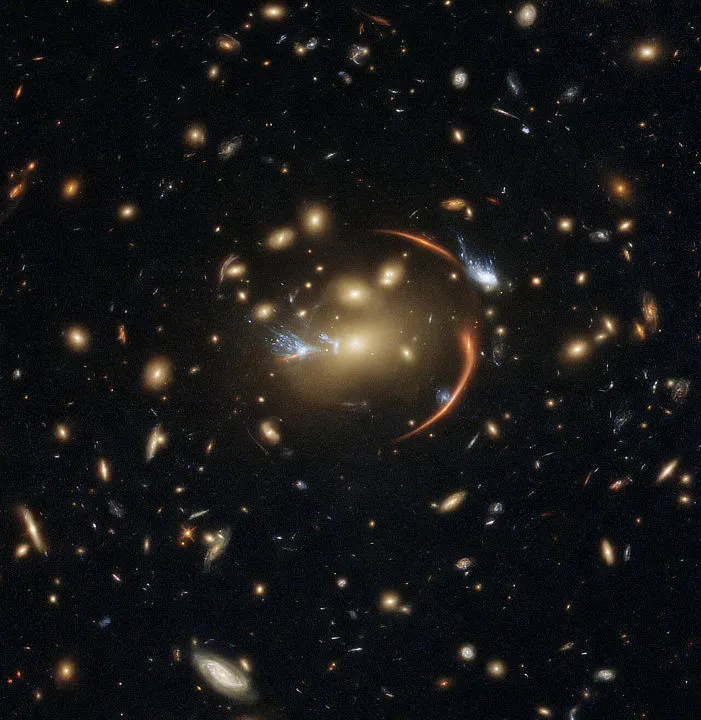
How gravitational lensing helps astronomy
Both strong and weak gravitational lensing are beneficial to studies of the distant Universe.
The effect magnifies the background light source, allowing astronomers to see objects that might otherwise be far too dim to see.
Studying how misshapen an image is can tell astronomers much about the lens that deformed it too.
Einstein’s equations predict how a lens will distort the light depending on its mass and shape – so, by working backwards from the image observed, it’s possible to figure out what properties the lensing galaxy has.
This is one of the few methods to directly measure the mass of large objects, which is important for studying dark matter, the otherwise invisible and still mysterious substance that makes up much of the Universe.
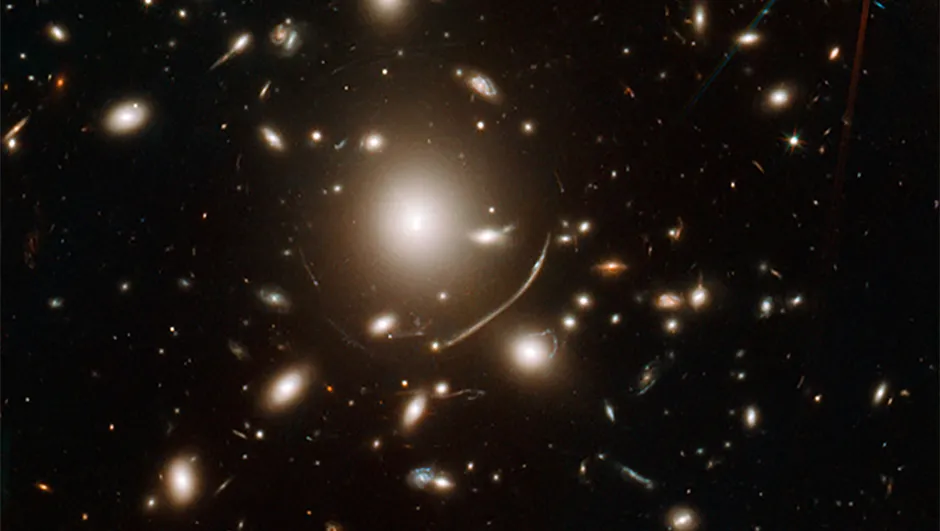
We can search for signs of weak lensing by determining the orientation of the billions of galaxies captured in deep-sky surveys.
Individually such measurements have little use, but when taken en masse patterns can be seen, as the lensing makes the images appear to align.
This subtle effect is not just caused by singular large objects, but by all the matter between the background galaxy and the observer, including dark matter.
By looking at the weak lensing of the earliest light in the Universe, the cosmic microwave background, some astronomers hope to create a map of dark matter throughout the Universe.
Computers can easily calculate the orientation of a galaxy, but they struggle to identify the distinctive arcs caused by strong lensing.
Fortunately, human eyes are much better at picking these out and so the citizen science programme SpaceWarps has been established to trawl through such surveys, searching for these enormously useful quirks of nature.
4 ways gravitational lensing takes shape
Gravitationally lensed galaxies can take many forms.
Einstein ring
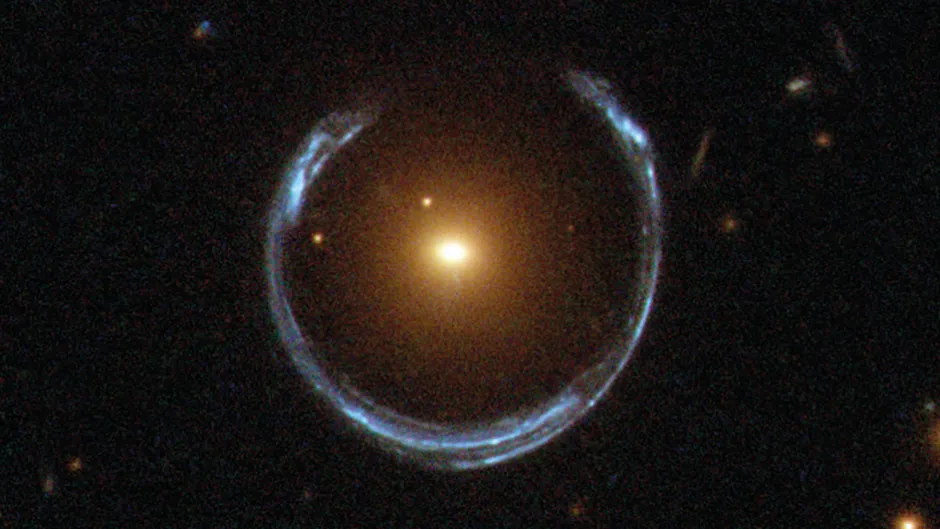
The first of three types of strong lenses.
When the background source, the lens and the observer are in perfect alignment, the light of a distant object is bent around the lensing galaxy by an equal amount in all directions.
This creates a circle around the lens known as an Einstein ring.
Einstein cross
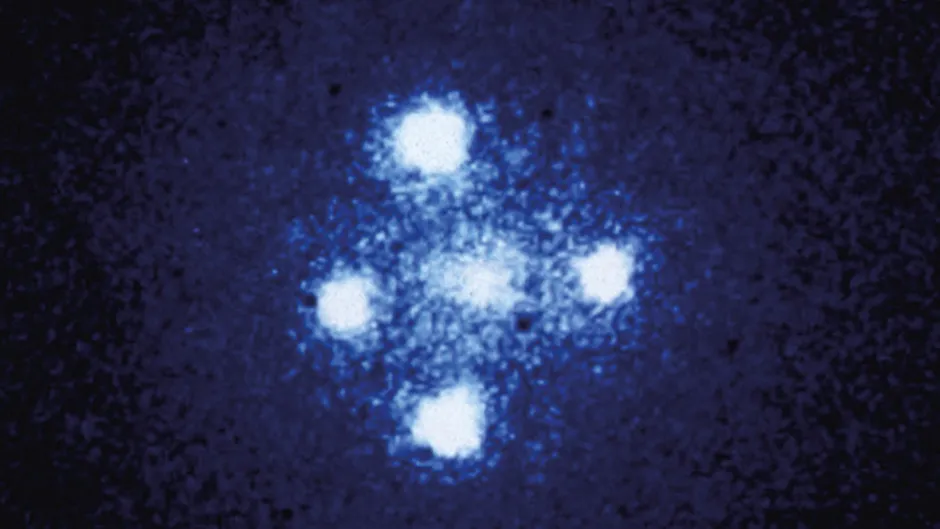
The second strong lens.
An Einstein Cross forms when there is only a slight misalignment between the background source, the lens and the observer.
The lensed image is slightly broken, and so rather than a ring we see four points of light around the central lens.
Arc
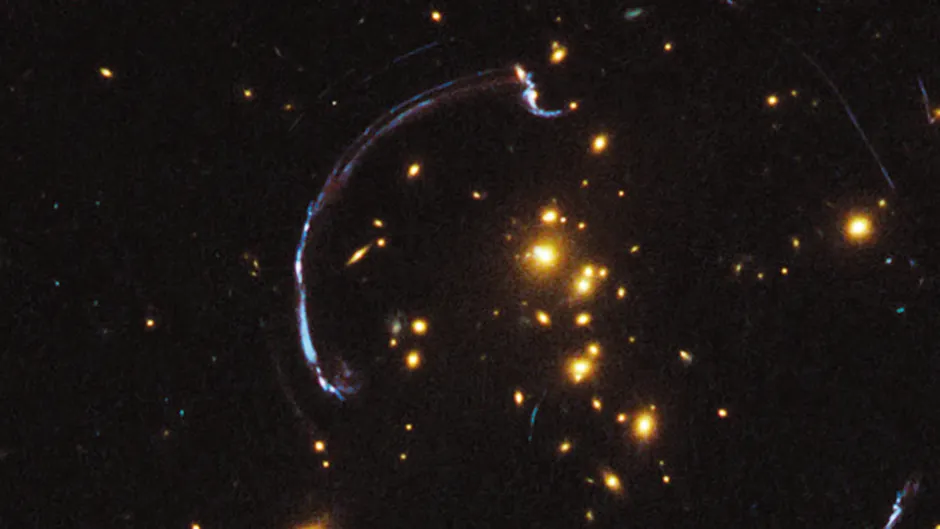
Perfect or near perfect alignments are rare, so these are the most common strong lenses; they are distinguished by their arcs.
These often appear blue, not due to any effect of the lens, but because the lensed galaxies are often rich in young, blue stars.
Weak lensing
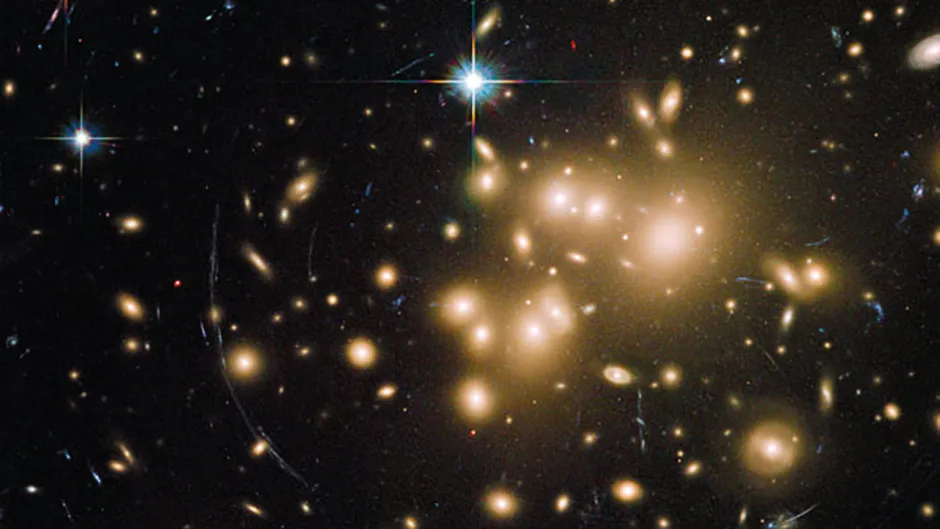
Weak lenses are more numerous than strong lenses, but they are harder to spot, and doing so requires looking at fields of galaxies rather than individual suspects.
On such large scales, the effects of lensing quickly become apparent.
